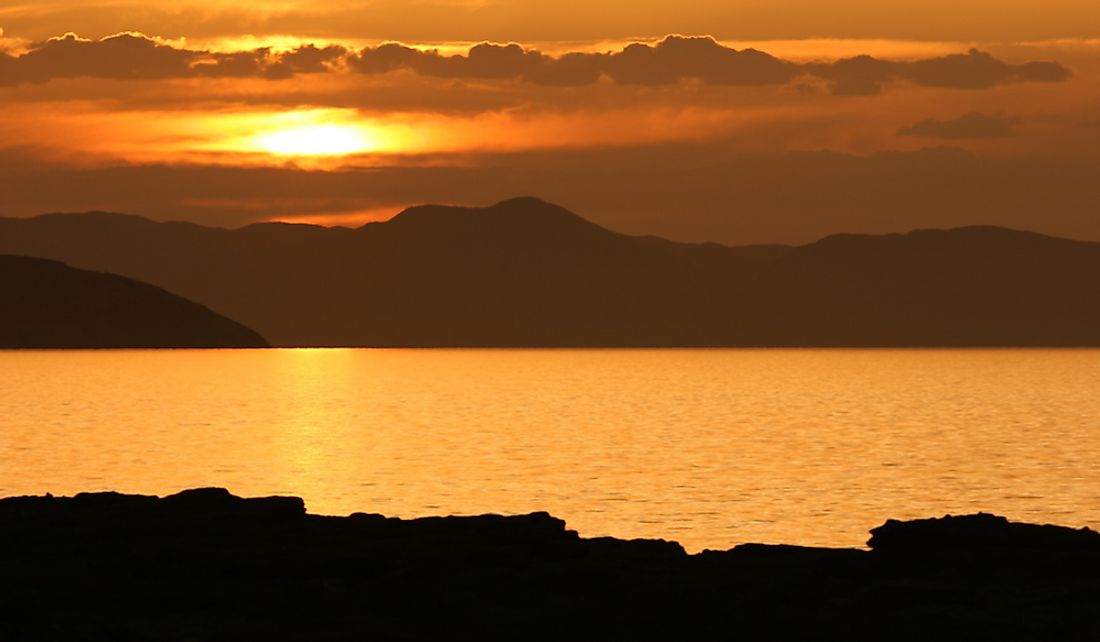What Are The Primary Inflows And Outflows Of Lake Turkana?

Lake Turkana is a 2,473 square mile lake in Africa, primarily situated in northern Keyna's Great Rift Valley, with a small section located within southern Ethiopia. The lake is the largest alkaline lake in the world, as well as the largest permanent lake situated in a desert. Lake Turkana is also ranked as the fourth largest saltwater lake in the world in terms of volume. The water of Lake Turkana originates primarily from three rivers: the Omo River, which flows in Ethiopia; and the Kerio and Turkwel rivers, that flow in Kenya.
Inflows of Lake Turkana
Omo River
The most important river that drains into Lake Turkana is the Omo River, which flows entirely within Ethiopia's borders. In fact, the Omo River supplies nearly 90% of the water in Lake Turkana. The river begins within the Ethiopian Highlands and flows for approximately 400 miles before draining into Lake Turkana. The most important tributaries of the Omo are the Gibe River, which is its largest tributary, and the Wabe River. The Omo and Gibe are sometimes considered to be the same river due to the similarity in their size and course. In 2006, the Ethiopian government began constructing the Gilgel Gibe III Dam along the Omo River as part of a hydroelectric power project. The construction of the dam was controversial, particularly among Kenyans, because several hydrological studies suggested that the dam would reduce the amount of water flowing into Lake Turkana. Additionally, it was estimated that the lake's water level would decrease by almost 32 feet, and would impact nearly 300,000 individuals by increasing the salinity of the lake. Experts also believe that the increase in salinity would reduce the amount of fish in the lake.
Turkwel River
The Turkwel River is another significant source of water for Lake Turkana. Flowing entirely within Kenya's borders, the Turkwel begins in Mount Elgon and flows for roughly 211 miles before draining into Lake Turkana. In 1986, the Kenyan government, with assistance from France, began constructing the Turkwel Dam along the river as part of a hydroelectric power project. Completed in 1991, the dam is also used to supply water for irrigation.
Kerio River
The Kerio River, which begins in Kenya's Amasya Hills and drains into Lake Turkana, has a length of 217 miles. The Kerio and Turkwel rivers supply most of the water that flows into Lake Turkana within Kenya's borders. The Kerio River has two main tributaries, the Embobut River and the Arror River, both of which flow along the Elgeyo Escarpment.
Outflows of Lake Turkana
Since no rivers flow out of Lake Turkana, its primary outflow is evaporation. The lake loses approximately 7.5 feet of water each year through evaporation.
Ecological Significance of Lake Turkana
Lake Turkana is of great ecological significance since it is home to a wide array of animals, including roughly 50 species of fish, 12 of which are endemic. The lake also has a significant population of turtles. For example, the Turkana mud turtle is endemic to the lake.







